When it comes to road safety, pedestrian crosswalks can be one of the largest challenges for traffic and safety. Whether you’re a pedestrian or a driver, it’s important to fully understand the definition of a crosswalk, and who has the right of way when a pedestrian and vehicle meet at them.
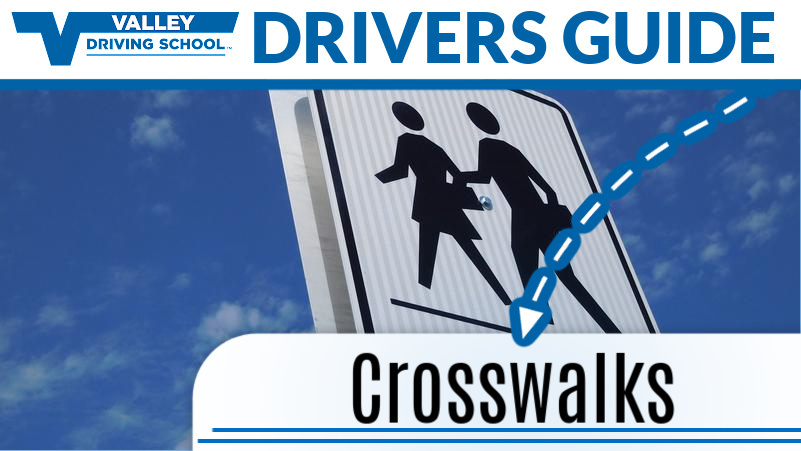
We’re reviewing what a crosswalk is and how to use them, as both a driver and a pedestrian.
What indicates a crosswalk?
According to the British Columbia Motor Vehicle Act, a crosswalk is defined as the following:
- The portion of the roadway at an intersection or elsewhere distinctly indicated for pedestrian crossing by signs or by lines or other markings on the surface
- The portion of a highway at an intersection that is included within the extension of the lateral lines of the sidewalk, curb or edge of the roadway (whether it is marked or not).
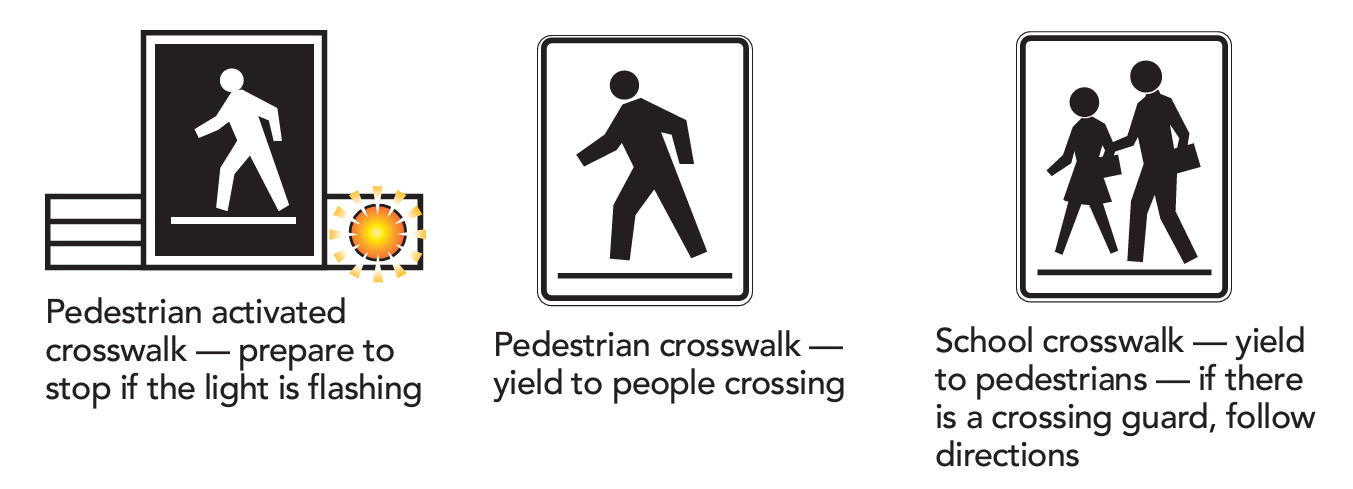
Pedestrian crossings can be marked in various ways, including not having any indicators at all. Some crossings are marked by white lines painted on the road, flashing yellow overhead lights, walk and stop lights on traffic light poles, and/or a white sign with black walking figures denoting the crosswalk on each side of the road. But, these telltale indicators may not always be present; at an unmarked intersection with no walk lights, painted lines or signs, pedestrians still have the right of way.
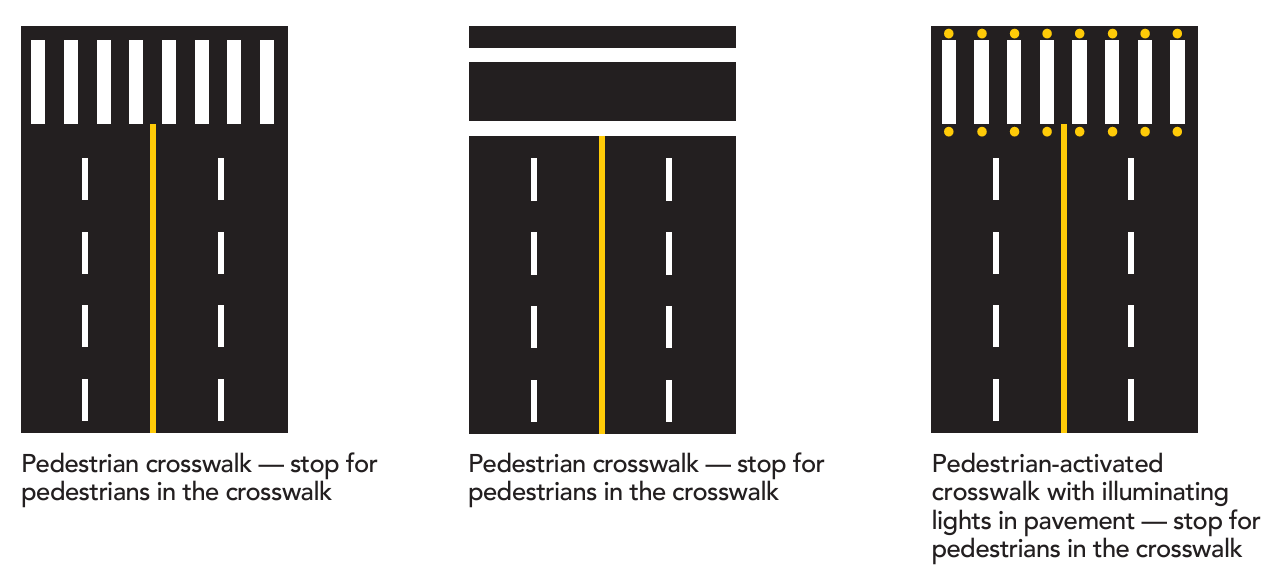
Crosswalks can also have pedestrian activated indicators to denote that there is an active pedestrian nearby and they are going to use the crosswalk. These can be a variety of indicators including flashing amber lights overhead, flashing amber lights to the side of the road, and flashing amber lights that are attached to crosswalk signs.
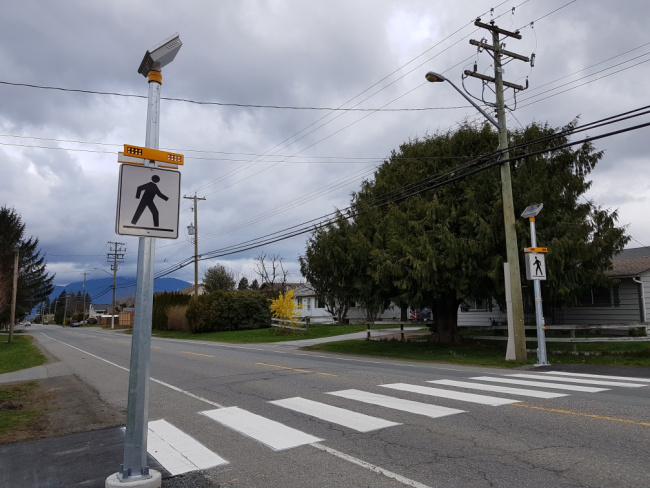
There are also pedestrian controlled traffic lights. These traffic lights are most commonly seen as flashing green lights which turn to a steady green light once a pedestrian has activated the crosswalk signals. The traffic lights will then turn to amber and then to red so traffic stops to allow the pedestrian to cross. After the driver comes to a complete stop and the pedestrian has safely crossed the driver’s path of travel, the driver may proceed - even if the traffic light is still red.
Where should drivers stop at a crosswalk?
There are specific rules that indicate where you need to position your vehicle when you have to stop at an intersection. If there is a stop line, stop just before the line. If there is a crosswalk but no stop line, you must stop just before the crosswalk. If there is an unmarked crosswalk, stop where you would if it was a marked crosswalk. Where there is no stop line, no crosswalk, and no sidewalk stop just before you enter the intersection. Drivers should not stop their vehicle in the middle of a crosswalk.
In marked crosswalks you must stop for a pedestrian if they are close to your half of the road. If you are at an intersection with no marked crosswalk, pedestrians still have the right of way as they approach your half of the road.
Be cautious when turning left or right - as you scan for oncoming vehicles and prepare to enter the new traffic flow you must also look for pedestrians crossing. Once you determine a sufficient gap in vehicle traffic to complete your turn, scan for pedestrians and other hazards before proceeding.
When is it safe for a pedestrian to walk?
Crosswalks often have indicators for pedestrians, letting them know when it is safe to cross and when it’s unsafe. Indicators can display symbols such as a walking person, which indicates it's safe to cross, or a hand, which indicates that pedestrians should wait. Ahead of the steady hand symbol, the hand symbol will flash as time runs out for pedestrians to cross. Even if they think they can make it across the street before the light changes, pedestrians should wait for the walking person to return before heading across. Pedestrians that begin crossing the street once the hand has already begun to flash could be given a fine of $109.
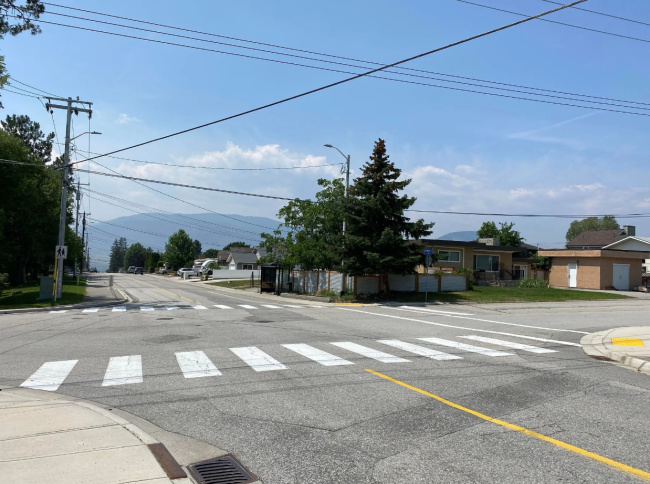
In addition to the walking person and hand symbols, some crosswalks are outfitted with a countdown to show exactly when the traffic lights will change.
Some crosswalks are even outfitted with audible pedestrian crosswalk devices. These audible signals make crosswalks easily used by visually impaired persons, and most commonly use an internationally recognized standard of bird sounds. Cuckoo sounds are heard when the north-south walk light is active, and chirp-chirp sounds are heard when the east-west walk light is active.
Whether a crosswalk is showing the walking signal, a flashing hand, or a solid hand, drivers should always use caution when approaching and crossing crosswalks. Pedestrians can start to use a crosswalk unexpectedly, or try to get across the crosswalk when it may not be safe for them to do so.
–
Drivers and pedestrians must work together to ensure the safety and wellbeing of everyone on the road. Improving awareness and increasing understanding of crosswalks can make the road a safer place for both drivers and pedestrians. Take an extra moment to look for pedestrians or to find a safe place to cross, to ensure everyone can arrive at their destinations safely.
